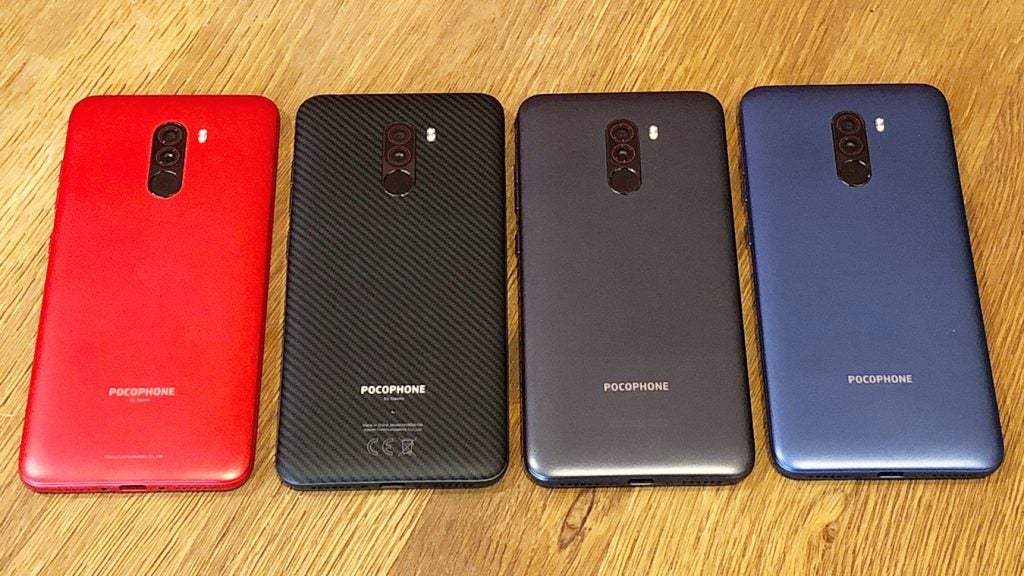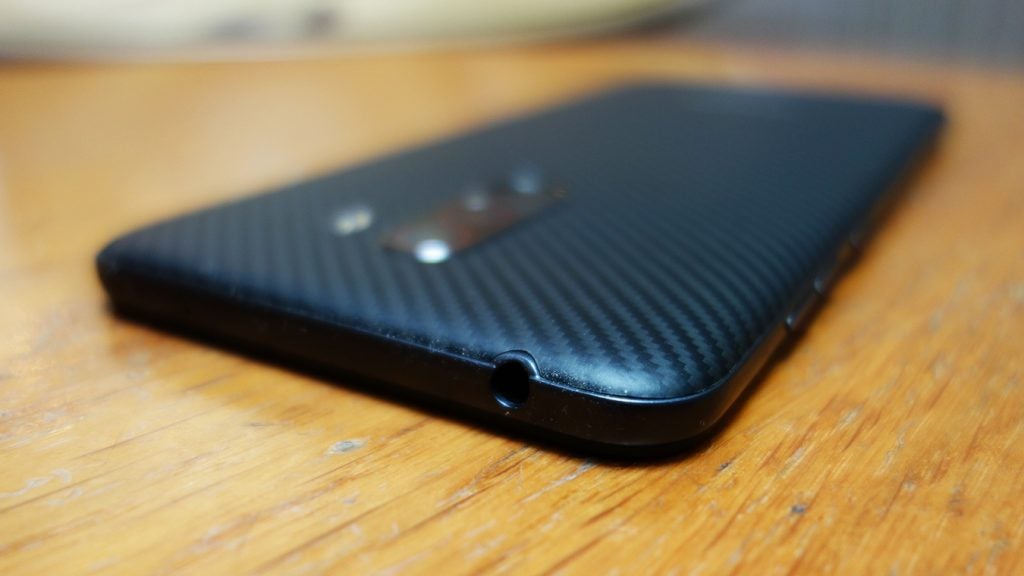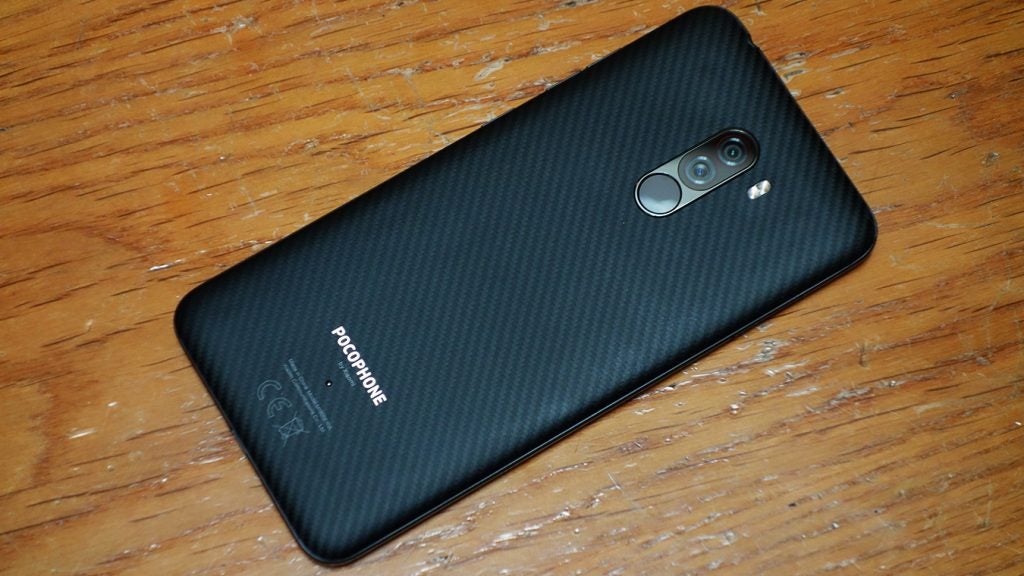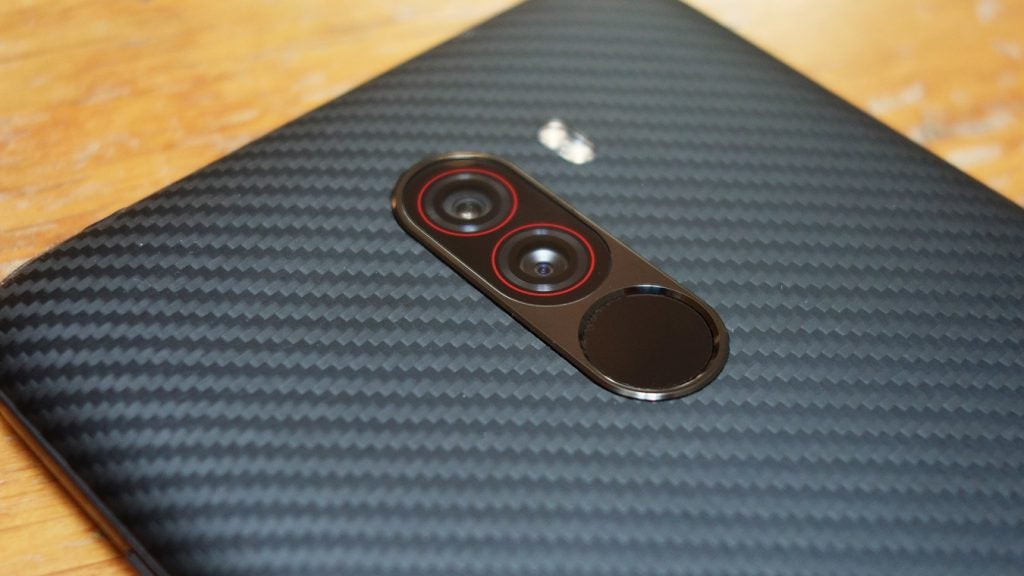Pocophone F1
What is the Pocophone F1?
The premium mid-range market is fast becoming one of the most aggressive in mobile. Companies such as OnePlus with its OnePlus 6 highlight the appeal of high-end specs at a lower price – but now, new player Pocophone is taking things to extremes with the new ₹20,999 (approximately £230/€260/$300) Pocophone F1.
If you haven’t encountered Pocophone before, you’re likely not alone. The new fledgeling company, supported by Chinese tech giant Xiaomi, is looking to shake things up with its first device, the Pocophone F1 – the new “Master of Speed” (Pocophone’s words, not mine).
The phone first launched in India, where Xiaomi has quickly become the biggest smartphone brand there is. Now, the company is progressively extending the F1’s reach to new markets both east and west of its origin.
Unlike Xiaomi’s own phones, which usually see availability radiating outward from China, the Pocophone F1 has been built from the ground up with the global market in mind. According to the company’s head of product, Jai Mani, there aren’t plans to release the F1 within China at all.
In essence, Pocophone and the F1 represent a new way for Xiaomi-based hardware and software to reach new customers in more markets.
Pocophone F1 – Design
As far as affordability is concerned, Pocophone has a few tricks to save costs whilst still delivering as a solid smartphone package. This concept most tangibly takes the form of the phone’s polycarbonate body. You won’t find a glass back or a curved metal frame running along the F1’s edge. Instead, you’ll get a mix of plastic and more plastic but assembled in such a way that the company has ensured the F1 still look plenty stylish and feels the part in hand.

We opted for the Pocophone F1 Armoured Edition, which sports a Kevlar back in place of polycarbonate
Available in metallic red, black or blue at launch, the use of polycarbonate means the F1 should be hard-wearing and more resilient than the glass-bodied handsets (such as the Moto G6) currently commonplace in the mid-range market and up. The company throws a case in-box, but also assumes that many won’t use it. A less expensive material means people are less likely to worry about scuffing or dropping their phone, and also more likely to enjoy the finish, rather than covering it up.
Related: Best iPhone XS cases
If the flat colour of the standard polycarbonate F1 isn’t to your taste, Pocophone has developed a more premium finish option in the Armoured Edition F1, which costs a little more but swaps out that plastic back for real woven Kevlar. Despite the strength implications for which the material is known, the Armoured Edition F1 won’t stop a bullet. Nevertheless, it certainly looks good, not to mention its silky finish offers better grip too.
On the downside, both the polycarbonate and Armoured Edition F1s retain greasy fingerprints, so maybe that included case might be useful after all. Affordability does also mean the Pocophone F1 forgoes any form of certified water- or dust-resistance as well.

In profile, you might be surprised by the thickness of the F1. At 8.8mm, it’s undoubtedly a chunkier smartphone considering its screen size. However, the company has again used some clever sculpting to give the impression that it’s a much svelter device in-hand. Look closely and you’ll notice that the screen is housed within a raised frame that extends the phone’s profile – deceptive, but clever.
Despite its affordability, there’s a more timely USB-C port at the phone’s base – and, despite its arrival in 2018, Pocophone still saw sense to include a standard 3.5mm headphone jack.
The handset also packs a rear dual camera positioned directly above a fingerprint sensor. The sensor’s placement is good for use with either hand, but the fact that both it and the cameras above it are circular does mean you run the risk of smudging a lens with your digits when you’re trying to unlock the device. Most shouldn’t have an issue, but it’s something to be aware of.
Pocophone F1 – Screen
There’s an extended 6.18-inch Full HD+ screen that dominates the front of the F1, sporting a 2246 x 1080 resolution. That renders it sharper than even not-so-affordable devices, such as Apple’s newly announced $749/£749 iPhone XR.
It’s a serviceable IPS LCD panel that offers impressive overall brightness and minimal colour-shifting. Brightness drop-off only really affects more extreme viewing angles. There’s no HDR support or any such cutting-edge wizardry, but it’s nonetheless a display that has no business being on a $300 phone – and yet here it is, in all its visual delight.

The display also features rounded corners of the type seen on other modern devices, such as the Samsung Galaxy S9. I’d argue they’re too rounded, though, pushing UI elements such as the clock too close to the notch in the centre of its top edge, leaving little room for notification icons in the process.
Pocophone has granted the F1 a wealth of display-related features, too. There’s an adjustable reading mode that reduces blue light emissions and can be scheduled to switch on and off automatically, a rich custom colour temperature menu, and gesture-based features such as double-tap and raise-to-wake. All are features that I’d only ever expect to see on pricier handsets and so was pleasantly surprised to find them on the F1.
One thing of note is that whilst the phone embraces a notched screen, it still features a sizeable chin too. The F1 may have been rendered more attractive and symmetrical if it went the way of Samsung, moving the whole display down and increasing the top edge bezel, eliminating the notch while reducing the bottom bezel at the same time.
Despite sporting an extended 18.7:9 aspect ratio, the Pocophone F1 still feels like a decidedly wide handset (75mm). This makes one-handed usage tricky, even though a software-based one-handed mode is on the table.
Pocophone F1 – Performance
The jewel in the Pocophone F1’s crown isn’t just its low price, it’s what you get for your money. The nickname ‘Master of Speed’ comes from the company’s decision to load the F1 up with Qualcomm’s current flagship processor, the Snapdragon 845, as well as pairing it with either 6GB or 8GB of RAM.
| Screen size | 6.18-inches |
|---|---|
| Screen resolution | Full HD+ (2246 x 1080) |
| Aspect ratio | 18.7:9 |
| Brightness | Up to 500 nits |
| Dimensions | 155.5mm x 75.3mm x 8.8mm |
| Weight | 180g |
| OS | Android 8.1 Oreo w/ MIUI 9.6 ‘For Poco’ |
| Front cameras | 20 megapixels (f/2.0) |
| Rear cameras | 12 megapixels (f/1.9) + 5 megapixels |
| Processor | Qualcomm Snapdragon 845 w/ LiquidCool Technology |
| Memory | 6GB/8GB RAM |
| Storage | 64GB/128GB/256GB + microSD up to 256GB |
| Battery | 4000mAh w/ Qualcomm Quick Charge 3.0 |
| Colours | Graphite Black, Steel Blue, Rosso Red, Armoured Edition (Kevlar® aramid fibre) |
| Extras | IR face unlock, hybrid dual SIM |
These specs sound at home on £700/$800+ devices such as the US Samsung Galaxy Note 9 and the new Sony Xperia XZ3, so to find them on something as aggressively-priced as the Pocophone F1 highlights just where you’re money is going. Despite the low price tag, the F1 should be able to keep step with devices that are seen as true flagships, devices that can cost three times as much.
Based on Pocophones’s hardware strategy, it seems as though the company’s philosophy isn’t all that different from the origins of OnePlus. It’s making waves in the industry by offering as powerful a phone as possible for as little as possible, without the end product coming across as half-baked or cheap.
Within benchmarking apps like AnTuTu, my humble 6GB RAM-toting Pocophone landed itself within the top 10 highest-scoring devices. Here’s a closer look at how well it performed in AnTuTu, 3DMark’s Sling Shot test and Geekbench 4.

Games such as Asphalt 9 and PUBG Mobile also ran the gauntlet, as did more approachable 2D offerings such as Alto’s Odyssey. The Pocophone F1 proved rock-solid, and also presented games with top-tier visual fidelity without complaint.

Thanks to the Pocophone’s hardware, PUBG Mobile defaults to max settings
You can max out the settings on the biggest titles in the Play Store, safe in the knowledge that the F1 will be able to handle them. It offers short load times, reliably smooth frame rates when playing the likes of PUBG Mobile, and impressive visual effects – such as lens flare and vehicle reflectivity within Asphalt – where supported.
The Snapdragon and RAM pairing are only one-third of what renders the Pocophone F1 such a solid device for intensive tasks such as gaming. The phone’s engineers have also added a liquid-cooling mechanism similar to the one found in both the Note 9 and, prior to that, the Microsoft Lumia 950. When the phone detects a game, it automatically empties out the cache and redistributes resources. As such, performance focus is on the task at hand, delivering the smoothest experience possible.
Beyond raw performance, call quality is also impressive, especially considering the F1’s price. Clarity is excellent, as is loudness and reliability (tested whilst on a high-speed train). The hybrid SIM tray lets you run two cards side by side, or expand the already capacious internal storage options of 64GB, 128GB or 256GB via microSD card too.

As for security, the notch on the F1 doesn’t just hold a front-facing camera; there’s also a secondary infrared camera that works in concert to provide the phone with face-unlock capability. The use of IR means the camera can also scan your face in low light scenarios, and while not as secure as Apple’s Face ID technology, it’s an unquestionable improvement over the standard RGB camera-based face unlock found on phones such as the Honor 7C and OnePlus 6. It’s both impressively fast and has proven to work at odd angles, and at a decent distance from my face as well.
Related: Best Android Phones
One large caveat right now is that this feature is absent from the phone’s software in certain markets. If you can’t find the option to log your face and switch on face unlock, try changing the phone’s region to the likes of India or Hong Kong. Pocophone is already working on bringing face recognition to more devices natively in other markets. For now, however, it’s nice to know that you can get access to it immediately if you want to.
There’s also that lightning-fast fingerprint sensor on the back, which for some might be the preferred unlock method anyway.
Pocophone F1 – Software
Speaking with Mr Mani ahead of the phone’s launch, it’s clear that the company realises the significance of a phone based on Xiaomi technology and its appeal in the global smartphone space. MIUI is a heavy-handed Android overlay that Western users might find jarring, sporting gesture-based navigation and other elements that are far more commonplace among smartphones in its native market of China.

Spotting potential dissonance with users in other markets, Pocophone chose to rewrap Android 8.1 on the F1 with a tailored ‘For Poco’ version of MIUI 9.6. While not losing the defining characteristics of the standard build of MIUI, it embraces traits more commonly found on other globally available devices. On-screen navigation buttons are present by default, and swiping up brings you into the apps drawer as it would in stock Android.
Small mercies aside, this is still a pervasive skin that even those familiar with Android will have to spend time getting used to. There are some novel adaptations, such as being able to filter your apps drawer by category or even app icon colour. Beyond that, the experience could prove grating.

The Settings menu looks and handles wildly differently to base Android, as do aspects such as home screen management and split-screen multitasking. Notification icons don’t readily show up in the status bar at the top of the phone, so if you miss them on your lock screen, you might not realise you have any waiting until you check manually.
There are a number of useful features under the hood, however. These include support for dual apps (two versions of WhatsApp, one tied to each SIM card, for example), app vault and a secure ‘Second Space’, as well as the ability to customise the look and feel of the F1 by way of a robust theme store.

One notable benefit to owning a Pocophone F1 is that the company isn’t shying away from letting tech-savvy users customise the software experience in the way they want. The bootloader can be unlocked from the get-go, without voiding your warranty, so you can flash any supported Android ROM that takes your fancy and still reach out to Pocophone if you encounter a hardware issue.
The company has also promised an upgrade to Android 9.0 with MIUI 10 running on top within the first three months of launch. A promise that should instil confidence in F1 owners, both existing and prospective.
There’s also some small part of me that wished that Pocophone offered an Android One variant of the F1, akin to the recently launched Xiaomi Mi A2.
Pocophone F1 – Battery life
If you’re buying a phone that’s geared to deliver on the promise of high performance and high-fidelity gaming, you also want to be sure that it can still function as a phone after you’ve spent the last 30 minutes out-building and out-gunning fellow players in Fortnite. Thankfully, the F1 is more than equipped for the job with a whopping 4000mAh battery. That’s the same-sized power pack you’d find inside the Galaxy Note 9 and the Huawei P20 Pro.
I was able to go a full weekend without charging the handset, and it can comfortably handle up to a couple of work days with almost five hours of screen-on time folded into that equation, too.
If you’re gaming, you can expect to go through a full day of use without the phone breaking a sweat – and that’s with bouts of PUBG Mobile thrown in. In testing, 30 minutes of PUBG Mobile play consumed 7% of the battery, while Netflix streaming sapped just 4% of the phone’s overall power over the same length of time.

The one big asterisk hanging over Netflix playback on the Pocophone F1 is that despite its extended 1080p display, the phone can’t currently play Netflix content in Full HD. Potentially as part of the company’s cost-saving measures, the F1 lacks the Widevine L1 DRM module. This means 720p streaming is as good as Netflix will give you right now.
This issue isn’t unique to the F1. OnePlus’ 2017 handsets fell to the same shortcoming – and to my knowledge, never saw a fix. Thankfully, Pocophone has said that this isn’t a hardware-level limitation of the phone and as such could potentially be patched via an over-the-air update.
Now, back to that superb longevity. Such a large battery means fast-charging is essential to render this phone a worthwhile purchase and, thankfully, that Snapdragon processor brings Qualcomm’s own Quick Charge 3.0 technology (as well as technically 4.0/4+ support) to the F1.
The in-box charger is capable of filling the F1 up to 25% charge after just 15 minutes, and it can reach 73% charge after an hour, with an additional 45 minutes spend topping the cell off.
Pocophone F1 – Camera
The camera is almost always the most obvious shortcoming on a low-cost phone, and yet Pocophone has once again subverted expectations with the imaging setup on the F1.
In truth, the primary 12-megapixel sensor with its f/1.9 aperture and 1.4µm pixels (a Sony IMX363, if you were wondering), as well as the sizeable 20-megapixel front-facer, have both been lifted directly from Xiaomi’s 2018 flagship handset, the Xiaomi Mi 8 – yet another benefit of Pocophone’s ties to Xiaomi’s supply line.

This manifests as an impressive camera experience – not only for an affordable smartphone but outright. You get an AI-enhanced auto mode, manual control, automated HDR shooting, real-time photo filters and Beauty mode, QR code scanning, a Portrait mode and more.
You’d also be hard-pressed to find fault with images taken in well-lit situations. They’re filled with detail, appear to rely on solid colour science, and showcase respectable dynamic range from that 12-megapixel main sensor. There’s also pleasing bokeh, instigated by the depth data picked up by the phone’s secondary 5-megapixel rear sensor.

Impressive dynamic range, colour and contrast in natural lighting

Attractive depth of field and it copes well with high-contrast shooting

The AI enhancements tend to overdo it

The bokeh that shots adopt is easy on the eye
There is some apparent softening along edges and amid fine details, but you have to crop in to really make images fall apart. HDR is also highly capable, ensuring that high and low contrast areas retain details that would be otherwise lost without adopting that compressed and processed ‘HDR look’ that some more affordable phones with an HDR mode end up generating.

Without HDR you still get a nicely balanced image

But with HDR enabled you recover detail otherwise lost
AI-enhanced shooting apparently automatically sets the ideal settings for your compositions before you press the shutter. Like the experience doled out on the Honor Play’s AI-backed camera, all it appears to be doing is giving your shots a saturation boost. If you like that extra ‘pop’ then leave it on. Otherwise, switch it off for more natural-looking photos.

I turned AI off for this as the green levels doled out hurt my eyes
In low-light shooting, it’s easier to spot the F1’s lack of image stabilisation tech. You can still take pleasing overall shots but shake and grain start to populate images once the lights go down. In spite of this, this camera isn’t rendered useless in low light; far from it. This isn’t something that can’t be said of many low-cost phones.

Fine detail is the first casualty in low light
The front camera has plenty of pixels to capture your visage in pleasing detail. It copes well with strenuous lighting, and packs in a robust Beauty mode that can either be stepped up through five levels or expanded for fine-tuned tweaking of skin smoothness, eye size and more. Best of all, it doesn’t leave you looking deformed, even at its highest settings.

Multiple faces can confuse the AI when taking a portrait mode selfie
The single sensor can also pull off a Portrait mode of its own. However, unlike the rear cameras, since it’s computing depth via a single sensor, it can sometimes become sloppy with its edge detection and confused when multiple faces are in-frame.
As for video, we’re impressed that 4K recording at 30fps is even part of the equation at this price point, let alone the fact that there are additional options for high frame rate, time-lapse and slow-motion capture as well. A lack of stabilisation is again the biggest consideration here.
Why buy the Pocophone F1?
Littered with strange quirks and odd omissions, there are plenty of small fault lines to pick at with the Pocophone F1. However, such niggles are just that – small. The overall experience offered up here is by and large excellent.
As I said earlier, the screen and camera have no business being as capable or as versatile as they are on a phone with a sub-$300 price tag. Plus, performance and software support look as though they’ll keep the F1 in-step with any 2018 flagship with regards to degradation over your average 18-month, two-year contract.
If NFC is a must-have for you, then buy the Honor Play. Beyond that, unless you’re heart is set on the more luxurious finish of the OnePlus 6, Samsung Galaxy Note 9 or the new iPhone XS, you can save yourself hundreds of pounds/dollars without sacrificing very much at all.
Related: Best cheap phones
Verdict
Provided you can pick up the Pocophone F1 in your region, it’s an easy buy for anyone who places performance, longevity and quality ahead of the aesthetics of conventional flagship phones – and even then, it’s far from an ugly duckling.
The post Pocophone F1 appeared first on Trusted Reviews.

No comments